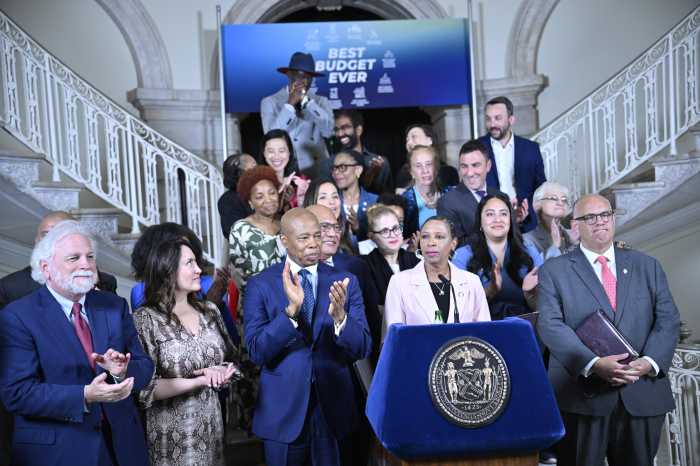
New York’s busiest sidewalks and most dangerous intersections could get a makeover if city lawmakers get their way.
The City Council is expected to pass two bills related to pedestrian safety on Wednesday. One would require the city’s Department of Transportation to identify and study the 10 locations with the heaviest pedestrian traffic and develop strategies, such as sidewalk extensions, to reduce overcrowding.
“It’s a response to what New Yorkers need and want,” said Manhattan Councilman Ydanis Rodriguez, chair of the council’s Transportation Committee and the bill’s sponsor. “New Yorkers need a wider sidewalk to be able to walk safe and not be pushed to take to the street.”
The second bill would require the DOT to produce a report on whether it’s best to implement what’s known as a “Barnes Dance” at intersections where the city experiences abnormally high crash rates. Barnes Dance describes a traffic signaling model that holds red lights in all directions at an intersection, to give pedestrians the exclusive right of way to cross the street.
The movement’s name refers to Henry Barnes, the city’s 1960s traffic commissioner who advocated for its use. The model is currently in use, in some form, at a handful of intersections in the city, including at Whitehall and Water streets.
“It’s already benefited my district,” said Councilwoman Margaret Chin. “All you have to do is come down to lower Manhattan. Our sidewalks are so crowded with visitors, with workers. And at the same time, because the streets are so narrow, a lot of delivery trucks park on the sidewalk and the pedestrian has to walk out on the street.”
At a council hearing last year, the DOT was lukewarm on expanding the use of Barnes Dance.
Sean Quinn, DOT’s senior director of bicycle and pedestrian programs, maintained that the agency has come up with more modern, data-driven approaches to protect pedestrians. The department also advocated for flexibility in its approaches for signal adjustments.
“We agree that pedestrians must be protected from turning vehicles and we are taking concrete steps to tackle this issue,” Quinn said in his testimony at the time.
The bills’ impacts on sidewalks and intersections will remain unclear until the reports are compiled. Both pieces of legislation grant a certain degree of flexibility for the city to chart its own course.
“Some bills are real legislation to become law and some are forms of political communication; this is probably the latter,” said Jon Orcutt, a spokesman at TransitCenter and former policy director at the city’s DOT, referring to the Barnes Dance bill.
“Generally, there’s a healthy tension between the council to get the city to be more aggressive with pedestrian safety and the city with the legitimate interest in not letting the council legislate what happens at particular intersections,” Orcutt said. “It’s healthy because you don’t want politicians with no expertise legislating intersections, but you do want them pushing harder on Vision Zero.”




































